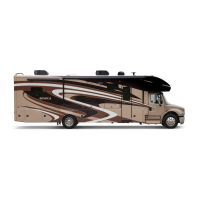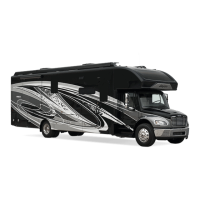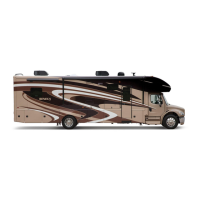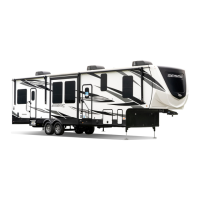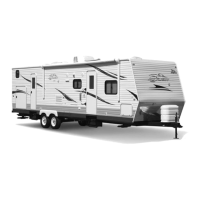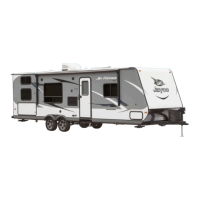21
Formaldehyde
Some components in the recreation vehicle contain
formaldehyde-based adhesives that may release form-
aldehyde fumes into the air for an unknown period of
time. Individuals who are allergic to formaldehyde
gas fumes may experience irritation to eyes, ears, nose
and throat. Indoor air quality may also be aected by
leaving your vehicle closed for a period of time.
To aid in dissipation, ventilate the recreation vehicle by opening all windows and circulate
the air with a fan.
This label is located inside the vehicle near the entry door.
The SILENCE/TEST button tests both sensors and battery voltage. The SILENCE/TEST
button is located on the front of the alarm. Press and hold the test button for 1 second. The
alarm performs 2 cycles of the CO horn pattern (4 rapid chirps followed by a 4 second pause)
followed by 2 cycles of the Propane horn pattern (constantly beeping). Green LED is OFF,
Red LED is ON/ashing.
Repair or replace the combination carbon monoxide/propane alarm when the alarm no lon-
ger functions. As with any electronic product, it has a limited life. Alarms that do not work
cannot protect you.
Test the alarm operation after the motorhome has been in storage, before each
trip and at least once per week during use.
Pressing the test button does not check the sensor opera-
tion. Refer to the carbon monoxide/propane alarm manufacturers user’s
manual provided with your recreation vehicle for additional information on
testing the sensors.
The carbon monoxide/propane alarm manufacturer strongly
recommends replacement of the detector ve years after the date of
purchase.

